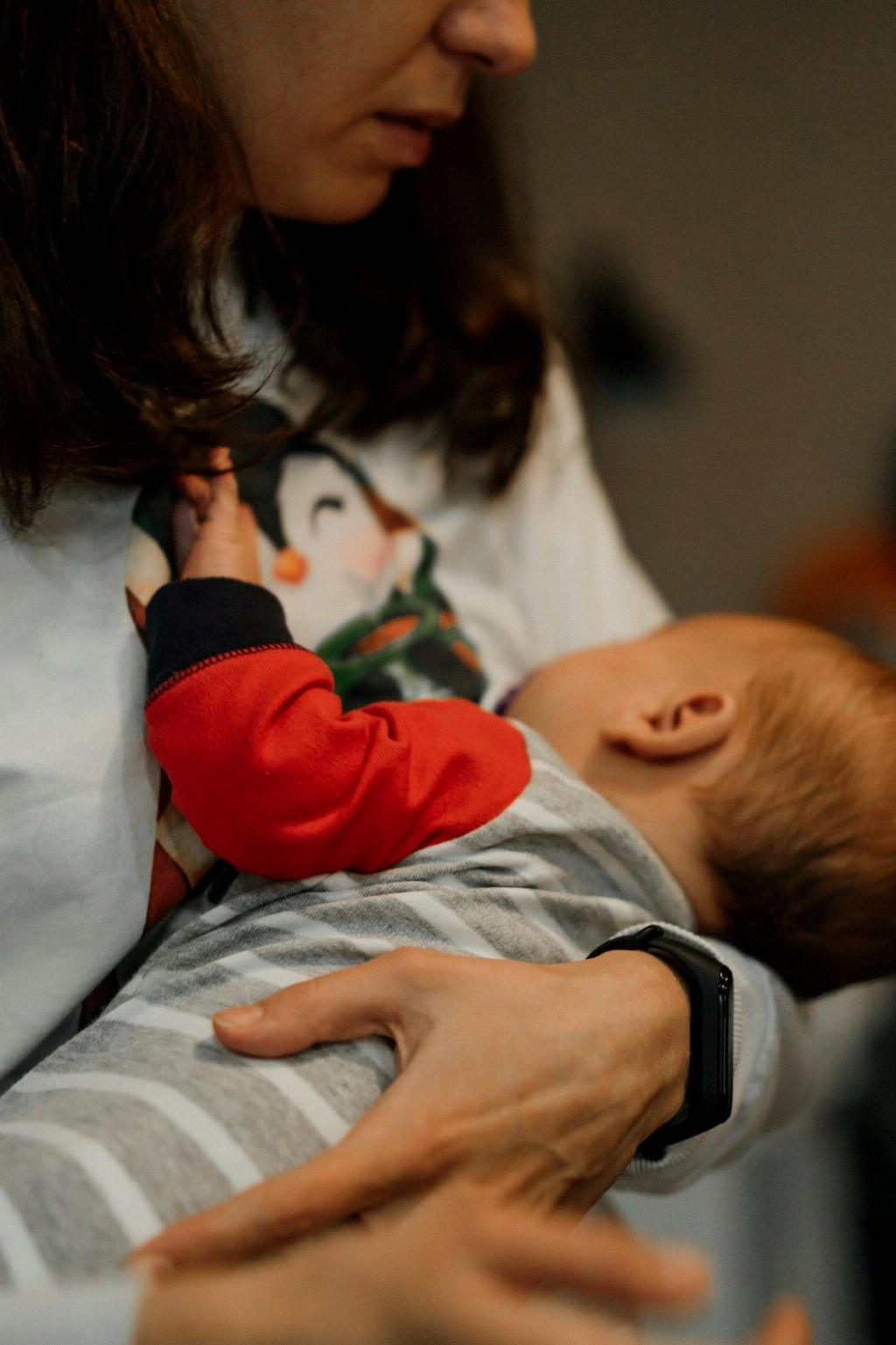When it comes to starting breastfeeding as a beginner, one of the most crucial aspects to pay attention to is the positioning and latching of the baby onto the breast. Ensuring a proper latch right from the start is essential for successful breastfeeding. To start, hold your baby close to your body in a “tummy to tummy” position. This closeness helps create a secure and comfortable environment for both you and your little one.
Positioning plays a vital role in establishing a good latch. Make sure your baby is facing your breast directly. This alignment makes it easier for the baby to latch on effectively. Also, it’s important not to press on the back of the baby’s head while guiding them towards your breast. Gentle support under the baby’s head is all that’s needed.
Before you begin the process of breastfeeding, ensure that you are in a comfortable setting. Find a quiet place where you can relax and focus on the bonding experience with your baby. Comfortable surroundings can significantly impact the success of breastfeeding sessions, especially during the initial stages.
Once you have settled into a cozy spot, it’s time to position yourself in a way that feels comfortable and supportive. Consider using pillows or a nursing stool to help elevate your baby to the correct level. Your comfort is just as important as your baby’s, so make sure you are relaxed and at ease before starting the breastfeeding process.
When it comes to latching your baby onto the breast, take your time to ensure a proper latch. Brush the baby’s lip with your nipple to encourage them to open wide. Aim to get as much of the areola (the darker area around the nipple) into the baby’s mouth as possible. A deep latch is essential for effective milk transfer and preventing discomfort for both you and your baby.
Remember that breastfeeding is a learning process for both you and your baby. Don’t hesitate to seek support from a lactation consultant or healthcare provider if you encounter challenges or have questions. These professionals can offer guidance and reassurance to help you navigate the early stages of breastfeeding with confidence.
As you and your baby continue to practice breastfeeding, pay attention to cues that indicate hunger or fullness. Your baby’s feeding patterns may vary, but frequent nursing sessions are common in the early weeks. Trust your instincts as a parent and respond to your baby’s needs with patience and care.
Establishing a breastfeeding routine can help create a sense of predictability and comfort for both you and your baby. Find a feeding schedule that works for your family dynamic and allows for flexibility as your baby grows and develops. Remember that every breastfeeding journey is unique, so focus on what works best for you and your baby.
It’s essential to prioritize self-care during your breastfeeding journey. Stay hydrated, eat nourishing foods, and get plenty of rest to support your body’s milk production and overall well-being. Taking care of yourself is a crucial component of successful breastfeeding and can enhance your bonding experience with your baby.
Don’t be discouraged by challenges that may arise along the way. Breastfeeding is a skill that takes time to develop, so be patient with yourself and your baby as you both learn and grow together. Celebrate small victories and milestones on your breastfeeding journey, and remember that every feeding session is an opportunity to connect with your baby.
As you embark on your breastfeeding journey as a beginner, trust in your instincts and embrace the bond you are creating with your baby through this nurturing experience. Remember that support is available to you whenever you need it, and you are not alone on this incredible journey of motherhood and breastfeeding.

